| | thepotteries.org |
|
|
The Tree of Life in textiles: The Indian tree pattern is a distinctive and recurring motif in textile and decorative arts, known for its lush, stylized depictions of trees, flowers, birds, and sometimes animals. It has deep roots in Indian art traditions and a fascinating journey across cultures and centuries.
Global Spread: During the 17th–18th centuries, Indian textiles (especially chintz) were in high demand in Europe. European traders (especially the Dutch and British East India Companies) exported large quantities of Indian fabrics. The “Tree of Life” or “Indian tree” motif became wildly popular and influenced European decorative arts, including English chintz, French toiles, and ceramics like those from Spode and Wedgwood. In Victorian Britain, the pattern was reinterpreted in wallpapers and upholstery. It was admired for its exotic beauty and symmetry.
Design Characteristics: Typically features a single, central tree rising from a mound, spreading its branches in a stylized, balanced way. The design blends naturalism and stylisation, a hallmark of Indian aesthetic. |
|
From Fabric to Pottery:
Cultural Significance:
|
Examples of Indian Tree Patterns
there
is a link underneath each picture leading to information on the manufacturer
the location of the factory in the Stoke-on-Trent pottery towns is given
along with the date of operation - not that the Indian Tree pattern
may not have been produced all throughout this time period
 |
|
Fenton | 1909-11
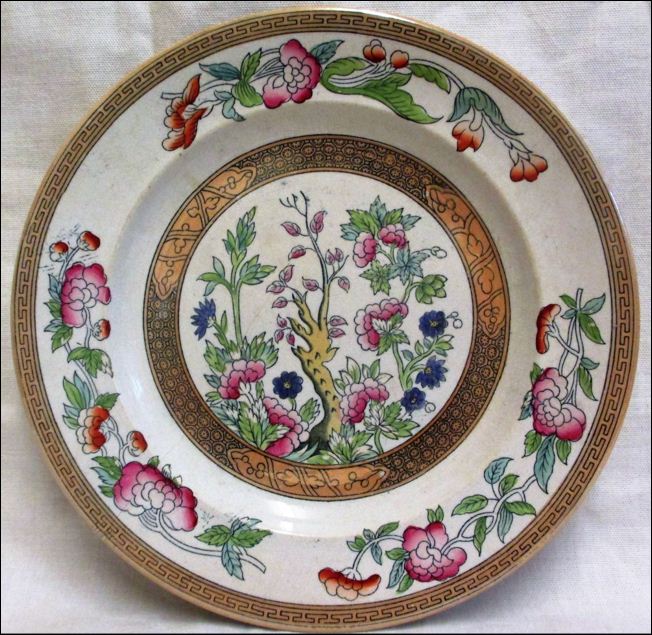 |
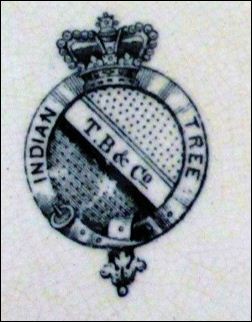 T B & Co Indian Tree |
Burslem / Tunstall | c. 1868-1872
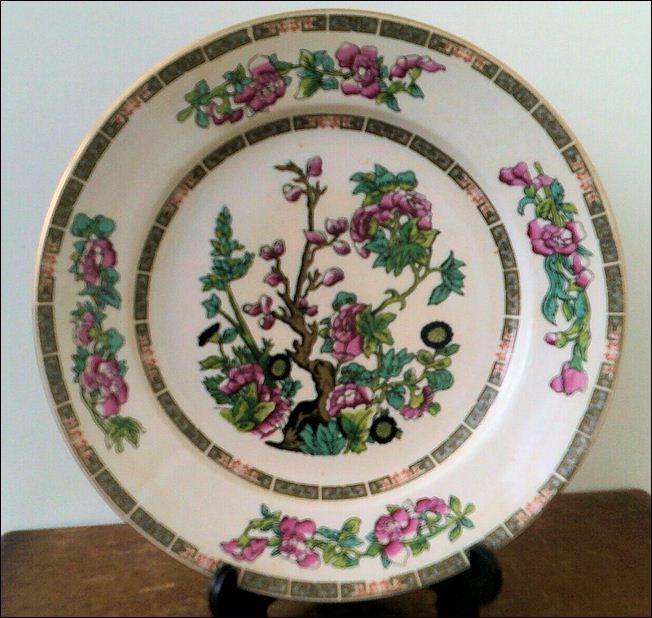 plate in the popular Indian Tree pattern c.1960s |
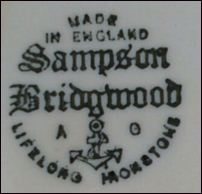 Made in England Sampson Bridgwood Lifelong Ironstone |
Longton | 1820-1984
Longton | 1870-87
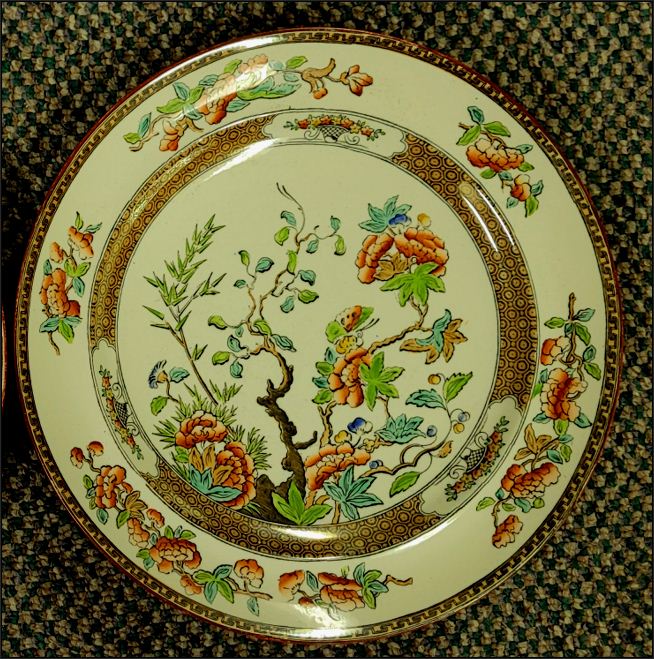 hand painted plate in the Indian Tree pattern Typically, on this
style of pattern the flowers are chrysanthemums which |
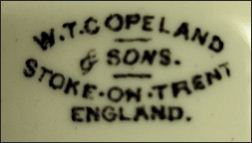 W. T. Copeland & Sons Stoke-on-Trent England mark probably post 1890 |
Stoke | 1847-1970
 part of a dinner set in the Indian Tree pattern |
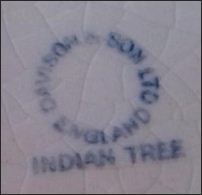 Davison & Son Ltd England Indian Tree |
Burslem | 1898-1952
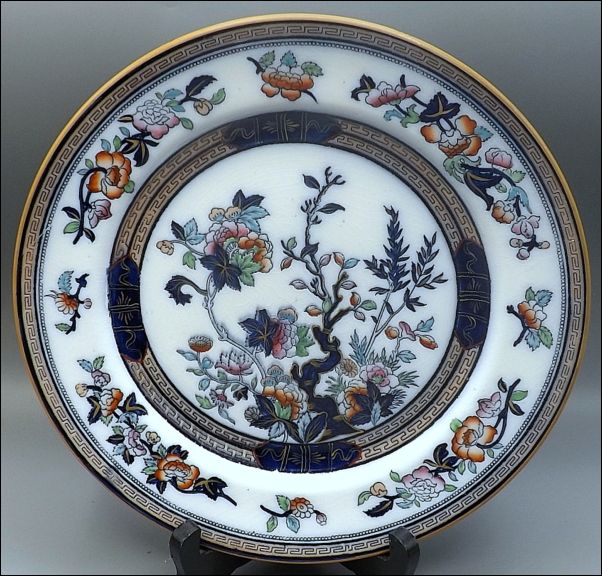 plate in the Dresden pattern- based on the popular Indian Tree pattern this pattern was started by Pinder,
Bourne & Hope and continued |
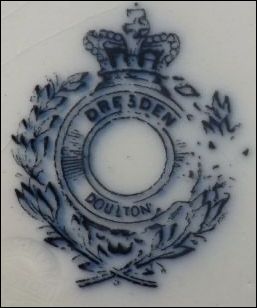 Dresden Doulton printed mark - the design continued from the previous Pinder partnerships - at the bottom left is an impressed mark
|
Burslem | 1882-2005
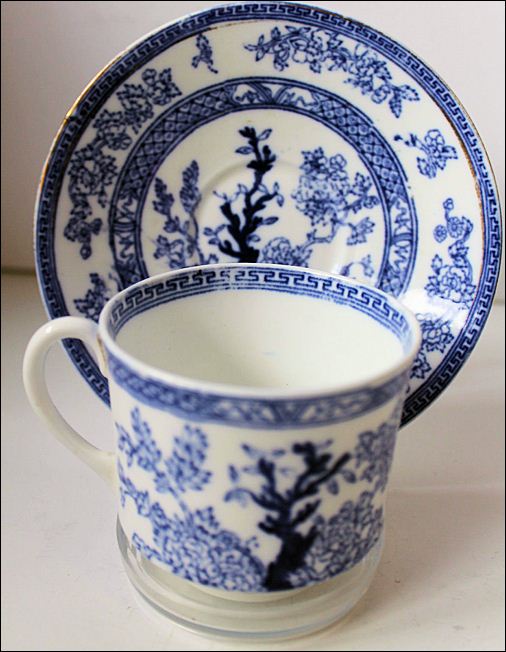 blue & white transferware in the Indian Tree pattern |
 - Crown Mark - Made in England c.1926-35 |
Fenton / Longton | 1924-48
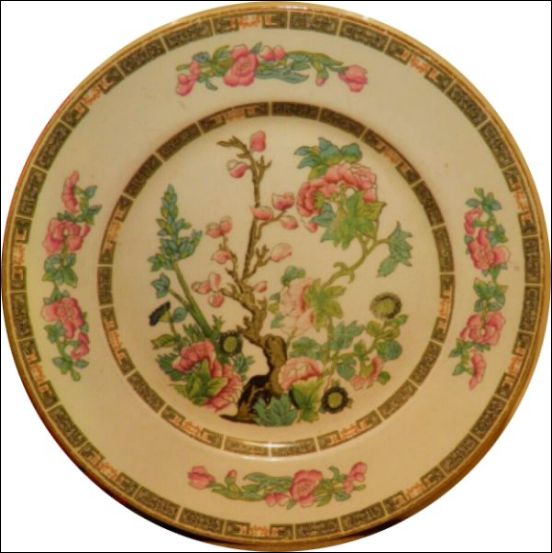 |
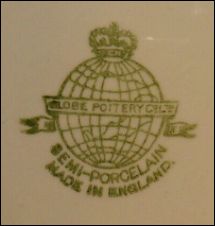 Globe Pottery Co. Ltd. Semi-Porcelain Made in England |
Cobridge & Shelton | 1814-pst 1956
 |
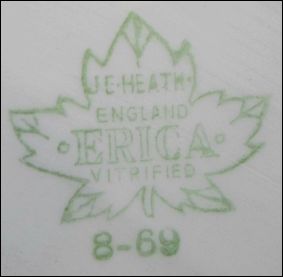 J. E. Heath Ltd England ERICA Vitrified the two numbers are the month - year of manufacturer so 8-69 is August 1969 |
Burslem | 1951-96
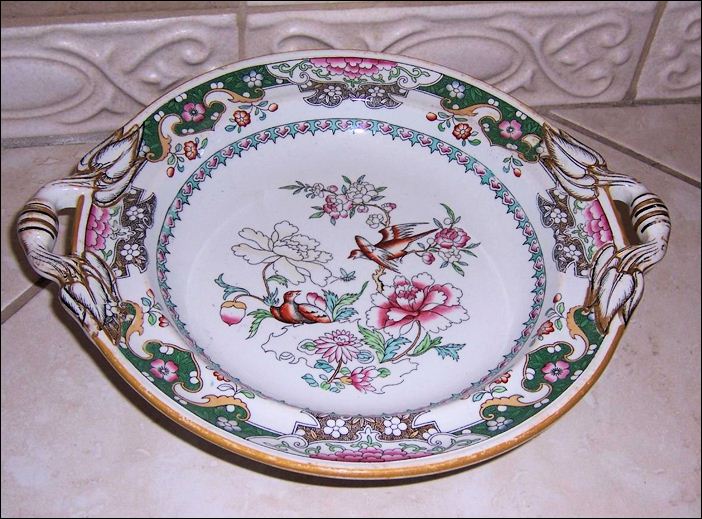
Minton & Co.
Serving plate in the BELMONT JAPAN pattern
Stoke | 1849-78

Fenton | 1906 - 1944
 |
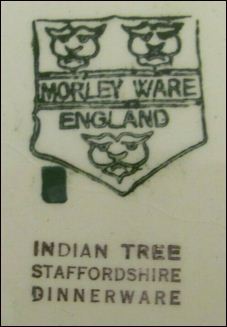 Morley Ware England Indian Tree Staffordshire Dinnerware |
Fenton | 1944 - 1957
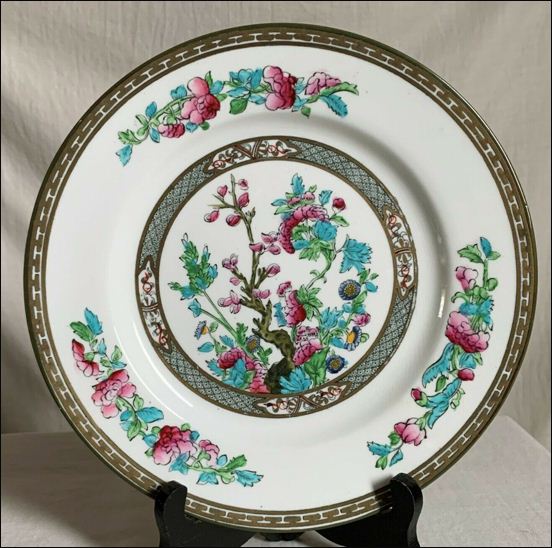 |
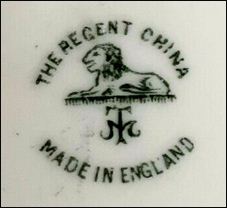 The Regent China TM Made in England Before c.1912 the trade name
REGENT CHINA |
Longton | 1892-1937
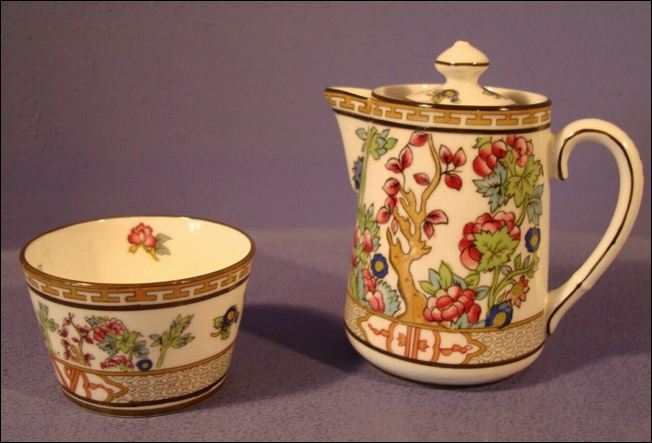
teapot and sugar bowl in
the Indian Tree pattern
|
|
|
Longton | 1920 - 1991
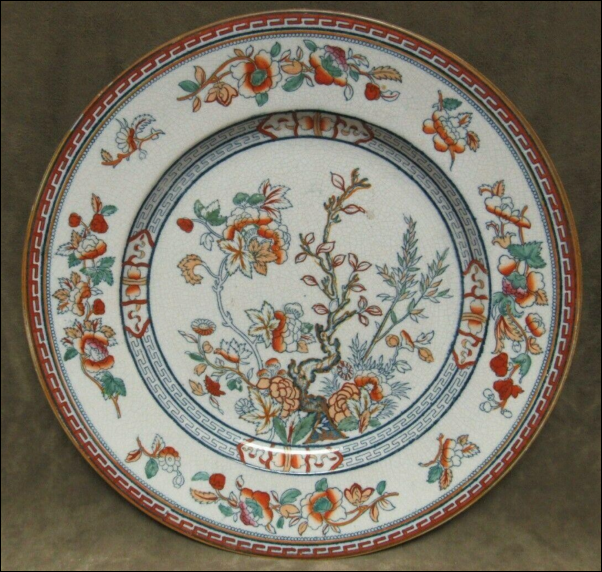 plate in the Dresden pattern- based on the popular Indian Tree pattern this pattern was started by Pinder, Bourne & Hope and continued by Doulton & Co |
 Dresden P B & Co |
Burslem | 1862-82